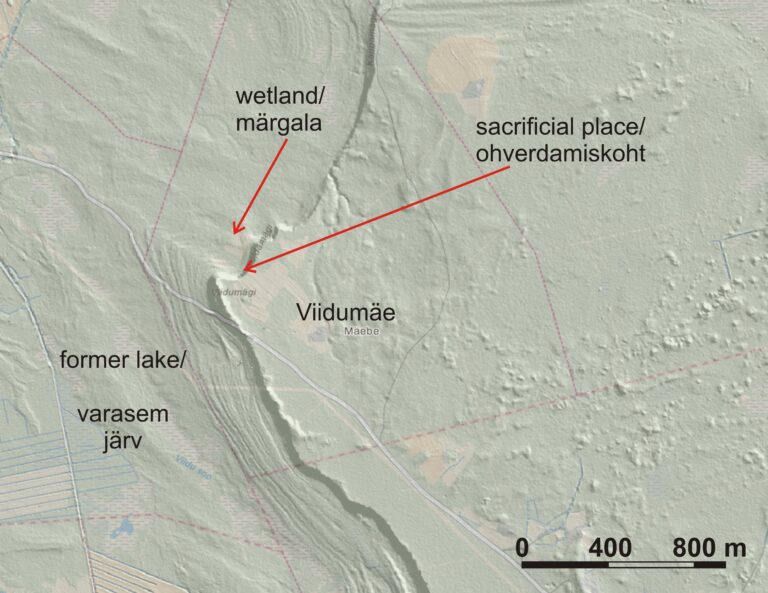
The sacrificial place at Viidumäe was found by illegal metal detectorists who managed to almost completely loot it before archaeologists were able to register the site in 2014. However, several photos of artefacts sold to the black market became available and have proved useful in interpreting the site. A number of artefacts were also found during archaeological excavations.
The shrine or sacrificial site of Viidumäe with its steep bank that used to encircle a small body of water is a naturally stunning, beautiful place. On the other side, the cliff bordered on a large inland lake connected to the sea. Arable lands in the immediate vicinity were scarce, but fertile fields with numerous archaeological sites were just 4–5 km away. Not far from the sacrificial site, on the elevated lakeshore in particular, several stone cairns, some of them presumably graves, were discovered.
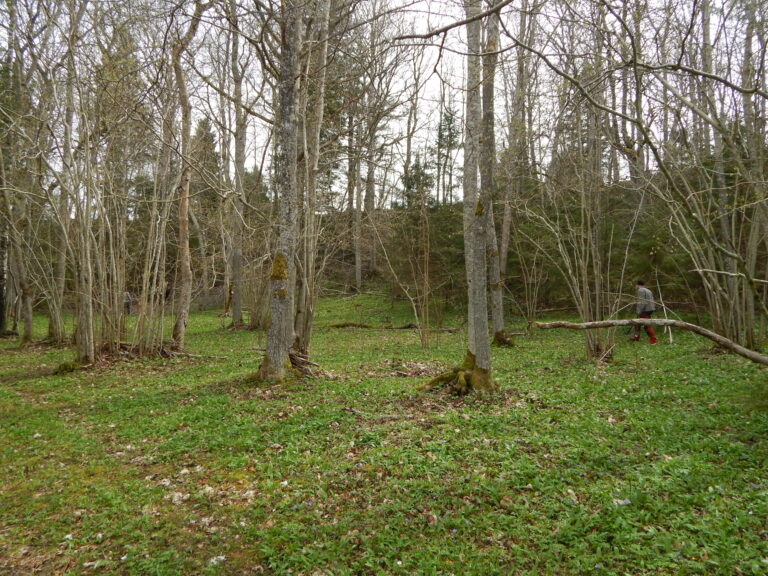
Most of the finds at Viidumäe were unearthed on the steep slope or at the foot of the escarpment, spread over a large area (0.8–1.2 ha). Five minor excavations were conducted in different locations at the Viidumäe site in 2014–2016 (Marika Mägi, Indrek Jets, Riina Riiel-Mürk). The findings included an exceptionally large number of arrowheads, most of them retrieved from areas at the foot of the escarpment. Dress pins and other jewellery, some made of silver, had been stuck into the sandy layer covering the slope. Fragments of ornaments and weapons (spearheads, angons, single-edged swords) were found in the area of the aforementioned small body of water. Most of the finds are dated to the 6th–9th centuries, however, some 12th–14th-century artefacts also came to light in the peripheral parts of the site.
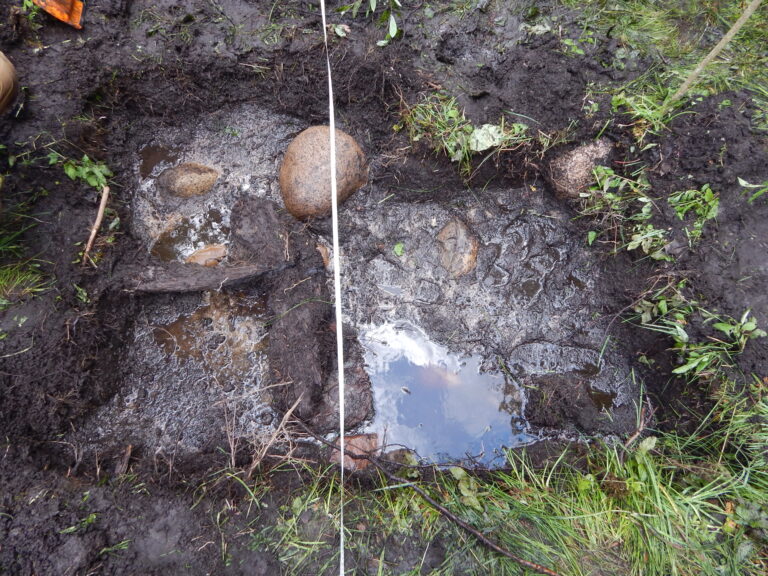
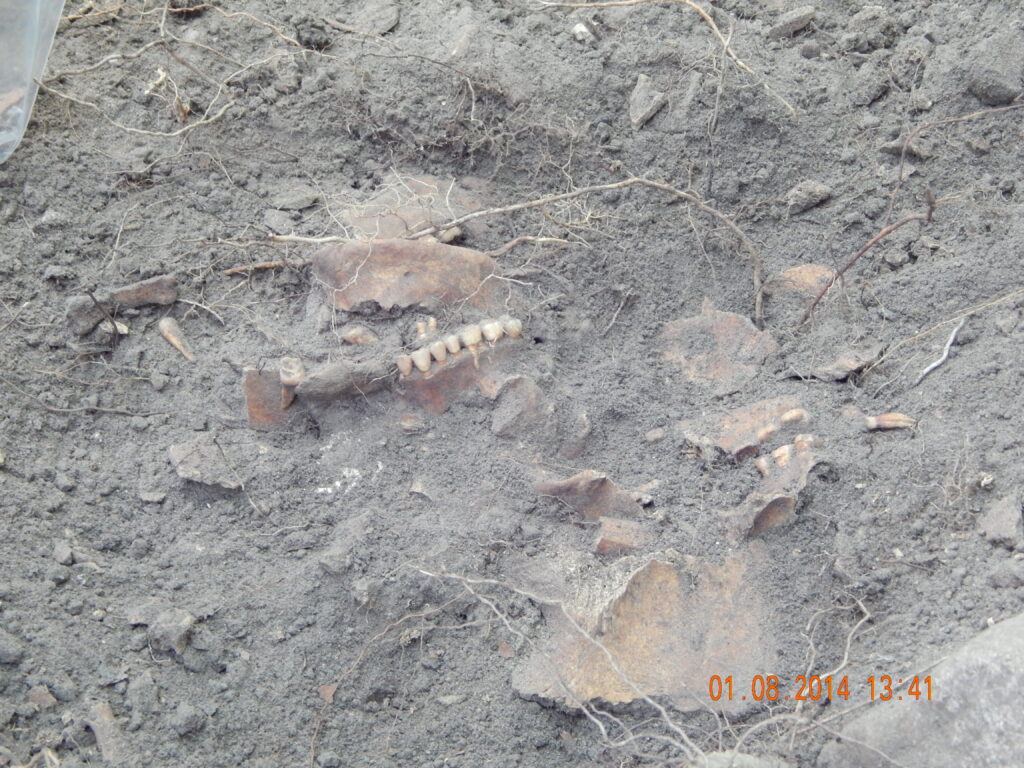
A specific area near the foot revealed a cluster of uncremated human bone fragments from several individuals deposited in a low hollow in the ground. Individual human bones were also found scattered elsewhere in the same area. A semi-circular man-made stone platform was recorded at the foot of the cliff, close to where the bones were discovered.
The 2 x 1 m hollow filled with fragmented human bones was unearthed by accident, in association with the discovery of an iron nail and two arrowheads. As indicated by gnaw marks of wild animals, the bones had been lying exposed on the ground for some time before being collected into the hollow. The bones were analysed by Raili Allmäe and Maris Niinesalu (Niinesalu 2020).
The fragmentary bones belonged to at least 13 individuals including males, females, and children (4–10 years old). The bones of six of the individuals exhibited marks of violence. Some of them were clearly executed, for example by beheading. 14C analyses taken from six individuals placed their time of death between the second half of the 7th century and end of the 8th century, or in the 9th century.
In the wetland area, remains of a burnt-down wooden platform or construction upon the body of water were discovered. 14C analysis from the wood indicated two periods: the 5th and 6th centuries, and the 14th century. Around this construction, numerous pre-Viking Age weapons were found, probably thrown into the shallow water as offerings.
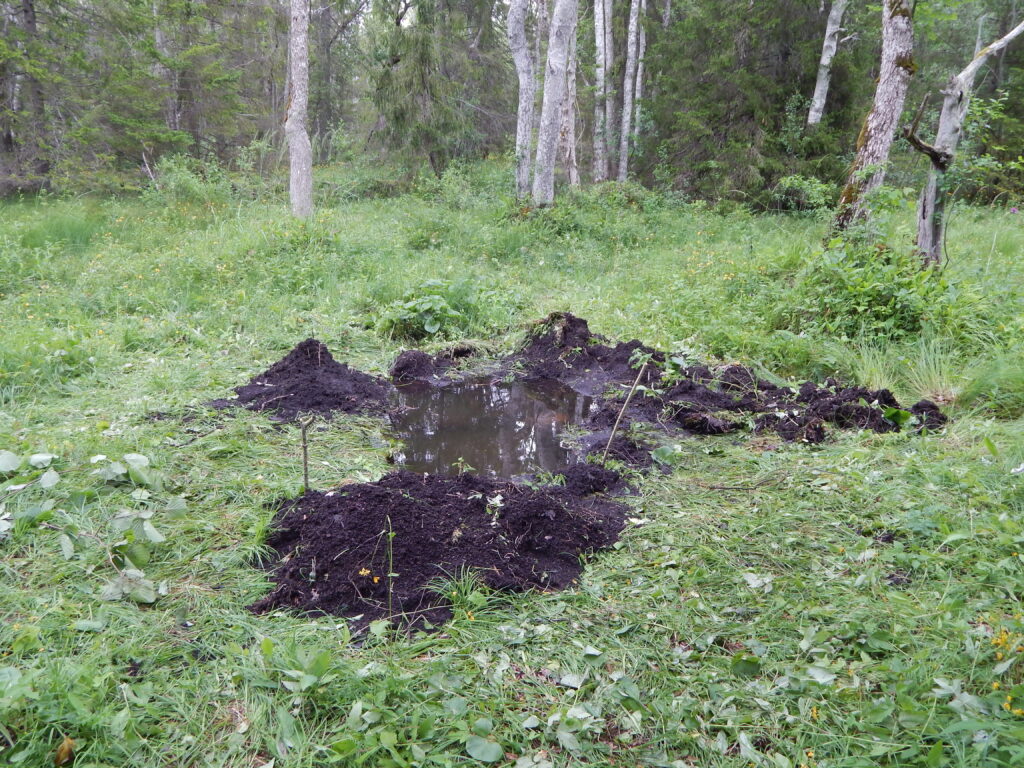
The location of the site, the conspicuous shape of the cliff, and the very obviously sacrificed artefacts suggest a shrine and/or a sacrificial place. The violently killed people, whose remains had been left on the ground and gathered together only later, give evidence of the custom of human sacrifice. Also, local folklore refers to one-time major offering places existing in Saaremaa where, among others, humans were sacrificed.


